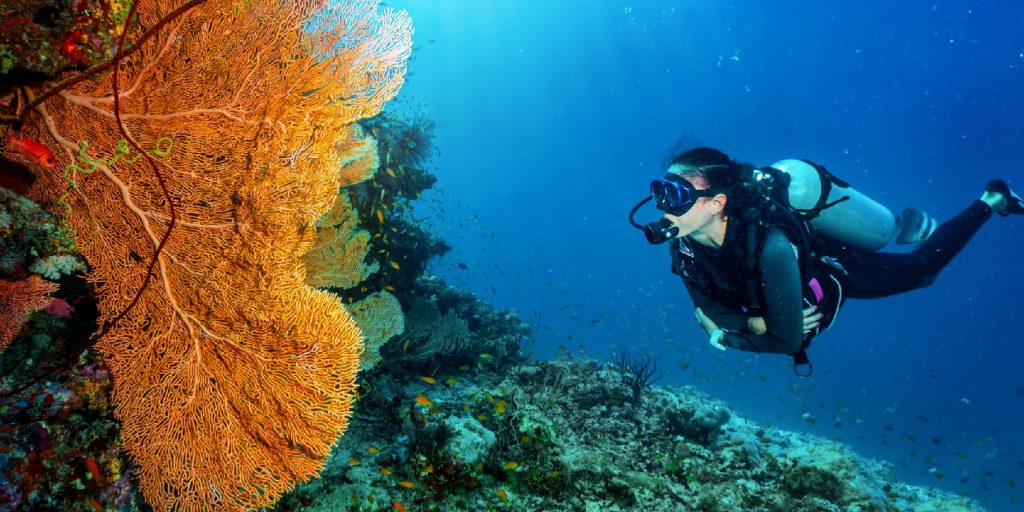4 Things You Need Before Trying Deep Sea Diving

Deep sea diving is a thrilling and rewarding experience for both beginners and experienced divers alike. Before you dive, however, you need to gather the right gear and equipment to keep you safe while underwater. You’ll also need to understand the risks associated with such a dangerous activity, know the proper lingo to use when planning a dive, and undergo essential training with a professional. In this post, we’ll cover all four of these necessary steps in detail so you can be fully prepared to explore the depths of the ocean. So, if you’re ready to take the plunge, let’s get started!
Prepare Your Equipment
One of the most important preparation requirements for deep-sea diving is getting the right gear. Here is a list of all the essential items you will need before embarking on your dive:
- Wetsuit
- Fins
- Snorkeling mask
- Weight belt
- Oxygen tanks
- Pressure regulator
- Buoyancy compensation device (BCD)
- Underwater flashlight
In addition to the listed items, it is also recommended to bring along a whistle and diving knife for emergencies, a waterproof camera for documenting your dive, and spare parts in case something malfunctions during your expedition. With all these necessary items in tow, you will be well-equipped for an enjoyable and safe deep-sea diving adventure.
Understand the Risks
Before going deep sea diving, it is essential to understand the risks associated with the activity. While deep sea diving can be fun and interesting, there are numbers of dangers to keep in mind:
- Marine life: There are many types of marine life dangers ranging from jellyfish stings to shark encounters. Make sure to always be aware of your surroundings and never approach dangerous marine life.
- Equipment failure: Your equipment could malfunction due to depth or pressure changes if it is not well-maintained. To avoid this, test your gear before diving and stay up-to-date with all necessary maintenance.
- Decompression sickness: Decompression sickness is caused by excess nitrogen in the bloodstream that occurs when the surrounding pressure decreases rapidly. Always take a slow and steady approach when ascending to the surface to prevent this.
- Oxygen toxicity: Oxygen toxicity occurs when the oxygen concentration in your tanks is too high for your diving conditions. When determining your tanks’ oxygen levels before a dive, use precise calculations that take into account factors like diving depth, temperature, exposure time, metabolic rate, and existing health issues.
By familiarizing yourself with these risks ahead of time and taking the proper safety precautions to avoid them, you will be able to enjoy your dive without worry.
Learn the Lingo
Deep sea divers must also familiarize themselves with various terms that are common among divers. Knowing the following terms will ensure that you understand what others are talking about when planning a dive or discussing their experiences afterward.
- Zero visibility: This means that it is impossible to see further than your nose due to murky waters or thick fog
- Bottom time: Refers to the amount of time spent on the ocean floor
- Depth limit: The maximum depth allowable for a dive
- Time limit: The maximum amount of time you may stay underwater
- Safety stop: Used when resurfacing to allow your body to adjust its nitrogen level slowly
Get Proper Training
Finally, it is important to receive proper training before attempting deep-sea diving. This can include lessons at a local dive shop or even online courses. Such training will equip you with the knowledge needed to stay safe while diving. Getting proper training will also provide answers to important diving questions like:
- How do you properly use and maintain scuba equipment?
- What precautions should you take underwater?
- How to use navigation techniques if you become lost underwater?
- How do you handle emergency situations like running out of air?
- How to use a diving knife if you become entangled in debris or netting?
Conclusion
Deep sea diving is a thrilling and rewarding experience for those brave enough to take the plunge. To make sure that you safely enjoy your deep sea excursion, it is important to prepare properly by obtaining the right gear, understanding the risks involved, learning the lingo, and receiving proper training. With these four essentials in place, you can look forward to a safe and enjoyable underwater adventure.
